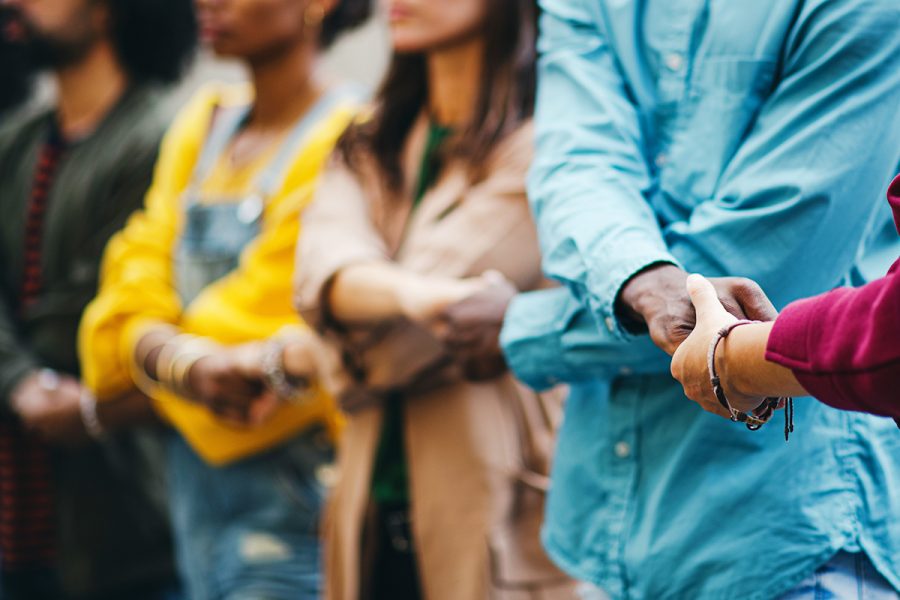Civil rights laws were created to protect people from discrimination, ensuring that everyone, regardless of race, gender, religion, or background, has equal opportunities. The Civil Rights Act of 1964, the Fair Housing Act, and the Americans with Disabilities Act (ADA) are just a few of the legal protections that have helped shape a more just society. But despite these laws, discrimination still exists in many forms. The reason? Legal loopholes, weak enforcement, and evolving discriminatory practices that adapt to the law.

Discrimination in Hiring and Employment
One of the biggest areas where discrimination persists is in the workplace. While laws prohibit employers from hiring, firing, or promoting employees based on race, gender, or disability, discrimination often happens in less obvious ways.
Even when employers don’t intentionally discriminate, unconscious bias can affect hiring decisions. Studies have shown that resumes with names that sound “ethnic” receive fewer callbacks than those with more common names. Employers may not openly reject applicants based on race, but internal biases still influence decisions.
Many companies now use artificial intelligence (AI) hiring tools to screen resumes and select candidates. The problem? These tools learn from past hiring decisions, which means they can inherit biases from human decision-makers. If a company has historically hired more men than women for tech jobs, the AI system might unintentionally filter out female applicants.
Most states in the U.S. follow at-will employment rules, meaning employers can fire workers without providing a reason. While companies can’t legally fire someone for discriminatory reasons, they can use vague justifications to cover their tracks. This loophole makes it difficult for employees to prove discrimination in wrongful termination lawsuits.
Housing Discrimination Still Exists
The Fair Housing Act of 1968 was meant to stop discrimination in housing. It banned landlords, real estate agents, and banks from treating renters and homebuyers unfairly based on race, religion, or family status. But despite these laws, discrimination in housing still happens.
Redlining—the practice of denying loans to people in certain neighborhoods, usually communities of color—was officially outlawed decades ago. However, today’s discrimination happens in subtler ways. Banks may still charge higher interest rates to Black and Latino borrowers, making homeownership harder to achieve.
Even though landlords can’t legally refuse to rent based on race or family status, some find ways around the law. For example, a landlord might tell an applicant that a unit was just rented, even though it’s still available, just because they don’t want a certain type of tenant. Others set high income requirements that disproportionately affect minority renters who may have lower generational wealth.
Voter Suppression Tactics
The Voting Rights Act of 1965 was passed to stop racial discrimination in voting. It eliminated literacy tests and poll taxes, which had been used to keep Black Americans from voting. But in recent years, new laws and policies have made it harder for certain groups to vote.
Some states require voters to present specific types of photo ID to vote. While this might seem reasonable on the surface, many people—especially the elderly, low-income individuals, and minority voters—lack these forms of ID. Studies show that these laws disproportionately affect Black and Latino voters.
In some states, election officials have shut down polling places in predominantly Black or Latino neighborhoods, forcing residents to travel long distances or wait in line for hours. This discourages voter turnout and makes it harder for people to exercise their rights.
Some states regularly remove people from voter registration lists if they haven’t voted in a few elections. While this is meant to keep records accurate, it often disenfranchises thousands of eligible voters who don’t realize they’ve been removed until they try to vote.
Discrimination in the Criminal Justice System
Civil rights laws were supposed to ensure equal treatment under the law, but studies show that race and income still play a huge role in who gets arrested, charged, and convicted.
Black and Latino individuals receive harsher sentences for the same crimes compared to white defendants. Studies show that they are more likely to be sentenced to prison and serve longer sentences for similar offenses.
Many courts require defendants to pay bail to be released before trial. Wealthy individuals can afford it, but poor defendants—who are often people of color—stay in jail for months or even years without being convicted of a crime. This forces many to plead guilty just to get out of jail, even if they didn’t commit the crime.
Traffic stops, stop-and-frisk policies, and airport security checks often target Black and Latino individuals at higher rates. Even though civil rights laws prohibit racial discrimination, police departments are rarely held accountable for profiling.
Disability Discrimination in Schools and Workplaces
The Americans with Disabilities Act (ADA) was passed to stop discrimination against people with disabilities. It requires businesses, schools, and employers to provide reasonable accommodations. But in practice, many people with disabilities still face discrimination.
Many schools do not properly accommodate students with disabilities, even though the law requires them to do so. Some schools push students with disabilities into separate classrooms instead of providing support in regular classes. Others deny extra testing time or assistive technology, making it harder for students to succeed.
Even though the ADA requires employers to provide accommodations like flexible work hours or ergonomic desks, many businesses ignore these requirements. Workers with disabilities are often passed over for promotions or forced out of their jobs because employers see them as a burden.
LGBTQ+ Discrimination Despite Legal Progress
The fight for LGBTQ+ rights has made huge progress, with major victories like same-sex marriage legalization and protections against job discrimination. However, legal loopholes still allow discrimination in certain areas.
While the Supreme Court ruled in 2020 that LGBTQ+ workers cannot be fired due to their sexual orientation or gender identity, there are still gaps in protection. Housing and healthcare discrimination against LGBTQ+ people remains legal in some states.
Some businesses and service providers use religious freedom laws as a reason to deny services to LGBTQ+ individuals. For example, some landlords refuse to rent to same-sex couples, claiming that it goes against their religious beliefs.
Why Civil Rights Laws Aren’t Enough
Even though civil rights laws exist to protect people from discrimination, loopholes, weak enforcement, and evolving tactics allow bias to continue. Discrimination today isn’t always obvious—it often happens behind the scenes, in the form of unfair hiring algorithms, housing policies that favor wealthier applicants, and voting laws that make it harder for certain groups to participate in democracy.
The existence of civil rights laws was a huge step toward equality, but laws alone can’t change deep-rooted biases. While we have made progress, there is still much work to do to ensure that civil rights protections truly apply to everyone.

